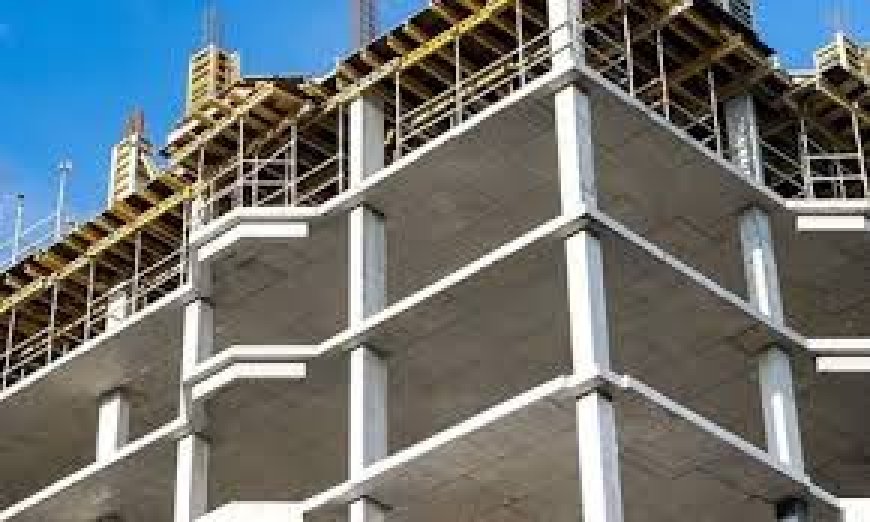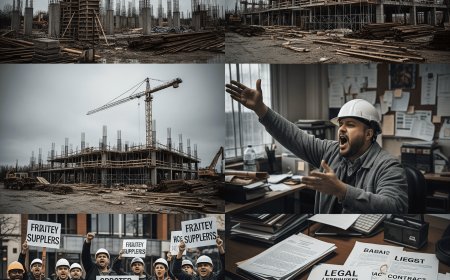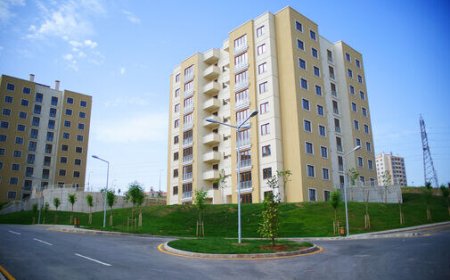Key Components of RCC Construction You Should Know
Discover the essential components of RCC construction, including cement, aggregates, steel reinforcement, and curing. Build stronger, safer structures with expert insights.

RCC, or Reinforced Cement Concrete, is the backbone of modern construction. From residential homes to high-rise commercial buildings, RCC plays a critical role in providing the strength, stability, and durability needed to withstand both time and natural forces.
Whether youre a homeowner planning to build or someone curious about construction, understanding the key components of RCC construction can help you make smarter, safer decisions. Lets dive into the essentials that make RCC a trusted choice in Nepal and around the world.
What Is RCC Construction?
RCC (Reinforced Cement Concrete) is a composite material made by combining:
-
Concrete (cement, sand, aggregates, water)
-
Steel reinforcement bars (rebar)
The concrete handles the compressive strength, while the steel takes care of tensile forces. Together, they form a structure that can resist heavy loads, wind, earthquakes, and time making RCC one of the most reliable construction techniques globally.
Key Components of RCC Construction
1. Cement
Cement is the binding material that holds everything together. It reacts with water to form a paste that hardens over time.
Common types used in RCC:
-
Ordinary Portland Cement (OPC)
-
Portland Pozzolana Cement (PPC)
Quality cement ensures durability, water resistance, and structural integrity. Always use fresh, high-grade cement from trusted manufacturers.
2. Fine Aggregates (Sand)
Sand is used to fill gaps between coarse aggregates and improve workability. It also helps in reducing shrinkage and increasing the compactness of concrete.
Make sure the sand is:
-
Clean and free from clay or silt
-
Well-graded for consistent strength
In Nepal, river sand is commonly used in RCC construction, provided it meets quality standards.
3. Coarse Aggregates (Gravel or Crushed Stone)
Coarse aggregates provide the bulk and strength of concrete. They should be strong, hard, and durable.
Tips for selection:
-
Use stones between 10 mm to 20 mm in size
-
Avoid flaky or elongated particles
-
Ensure they are clean and dust-free
The quality of aggregates directly affects the load-bearing capacity of RCC.
4. Water
Water is critical for the hydration process of cement. However, poor-quality water can weaken the concrete.
Use water that is:
-
Clean and potable (drinkable)
-
Free from oil, acid, salts, and other chemicals
Dont underestimate the role of water quality it's as important as cement or steel in the final mix.
5. Steel Reinforcement (Rebar)
Steel bars are used to resist tensile stress and provide ductility to RCC. These are usually in the form of:
-
TMT bars (Thermo-Mechanically Treated)
-
Mild steel bars (less common now)
In Nepal, TMT bars are preferred for their strength and earthquake resistance. Rebars must be:
-
Rust-free
-
Properly bent and tied
-
Placed as per design drawings
Correct spacing and alignment of reinforcement are crucial to a building's safety.
6. Concrete Mix
The concrete mix ratio determines the overall strength and performance of RCC. It includes the proportion of:
-
Cement
-
Sand
-
Aggregates
-
Water
Some common mix ratios include:
-
M15 (1:2:4) for general construction
-
M20 (1:1.5:3) for RCC columns, slabs, beams
-
M25 and above for heavy structures or commercial buildings
Ready-mix concrete is also popular for large-scale projects to ensure consistency.
7. Formwork (Shuttering)
Formwork is the temporary mold that holds the concrete until it sets. It ensures the structure has the desired shape and surface finish.
Types of formwork:
-
Timber (wooden planks)
-
Steel
-
Plywood
-
Plastic (reusable)
Proper alignment and tight joints are necessary to prevent leakage and ensure smooth surfaces.
8. Curing
Curing is the final but essential stage of RCC construction. It keeps the concrete moist for a specific period (usually 7 to 14 days) to ensure:
-
Complete hydration of cement
-
Maximum strength gain
-
Reduced cracks and surface defects
Neglecting curing can severely reduce the lifespan of a structure.
9. Workmanship & Supervision
Even with high-quality materials, poor workmanship can ruin RCC. Always ensure:
-
Skilled laborers
-
Experienced supervisors
-
Regular site inspections
-
Adherence to design and safety standards
Conclusion: Build Strong, Build Smart
Understanding the key elements of RCC construction helps ensure your building is safe, strong, and built to last. Whether youre constructing a family home or a commercial complex, using quality materials and following best practices is non-negotiable.







































